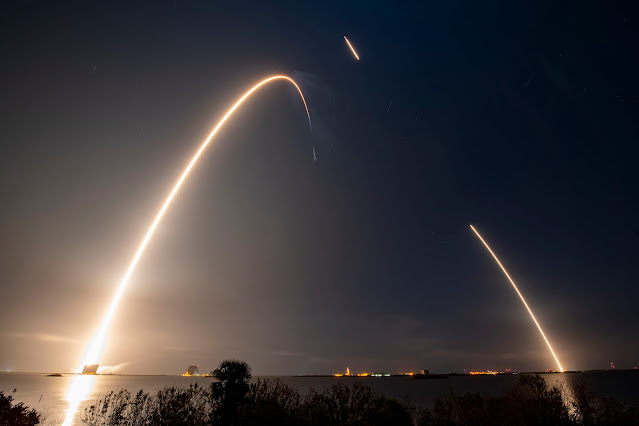NASA's Dragonfly: Eyes in the Skies of Saturn's Moon Titan 🪐🌒
Dragonfly is a rotorcraft lander mission—part of NASA's New Frontiers Program—designed to take advantage of Titan's environment to sample materials and determine surface composition in different geologic settings.
The Dragonfly dual-quadcopter will explore a variety of locations on Saturn's moon Titan. The dense, calm atmosphere and low gravity make flying an ideal way to travel to different areas of the moon. Studies from the late-1990s onward identified aerial mobility, such as that provided by helicopters, balloons, and airplanes, as a key enabler for Titan exploration. At this stage of the mission, the team is refining Dragonfly's design to best meet its exploration objectives at Titan. This means an evolving look for the rotorcraft-lander that incorporates new camera and instrument placements, thermal designs and use of materials to save mass.
In under an hour, Dragonfly will cover tens of miles farther than any planetary rover has traveled. With one hop per full Titan day (16 Earth days), the rotorcraft will travel from its initial landing site to cover areas several hundred kilometers away during the planned two-year mission. Despite its unique ability to fly, Dragonfly would spend most of its time on Titan's surface making science measurements.
Learn more about this revolutionary ocean world mission: https://dragonfly.jhuapl.edu/
On its final flyby of Saturn's largest moon in 2017, NASA's Cassini spacecraft gathered radar data revealing that the small liquid lakes in Titan's northern hemisphere are surprisingly deep, perched atop hills and filled with methane.
The findings, published April 15, 2019 in Nature Astronomy, were the first confirmation of just how deep some of Titan's lakes are (more than 300 feet, or 100 meters) and of their composition. They provide new information about the way liquid methane rains on, evaporates from and seeps into Titan—the only planetary body in our solar system other than Earth known to have stable liquid on its surface.
Credit: Johns Hopkins University (JHU) Applied Physics Laboratory
Duration: 39 seconds

.jpg)















